Introduction: Syrian regular forces and their allies continued their heaviest military campaign[1] on Eastern Ghouta cities and towns, using various types of weapons, such as rocket launchers “Smerch type”, barrel bombs, guided missiles and incendiary weapons.
As on March 7, 2018, the city of Hamoryah[2] witnessed a bloody day (following adoption of Security Council Resolution No. 2401), where it was shelled with weapons loaded with incendiary substances, similar to phosphorous, and napalm-like substances. This was accompanied with targeting Hamoryah with a barrel bomb, loaded with toxic gas, dropped by a helicopter on the road between Saqba town and Hamoryah, as confirmed by the field researcher of Syrians for Truth and Justice/STJ.
As well as targeting the city with a rocket loaded with cluster munitions the same day. This intensive shelling killed at least 29 civilians, two of whom were burnt to death with incendiary substances, and caused suffocation to scores of civilians as a result of using toxic gas besides the outbreak of fires in residential buildings
The hysterical shelling hasn’t spared the city of Irbin[3], which was targeted by chemical weapons loaded with incendiary substances similar to phosphorus and others loaded with napalm-like substances, on 10 and 11 March 2018. According to numerous testimonies obtained by STJ, shelling Irbin city with incendiary substances accompanied by targeting it with toxic gas on March 11, 2018, causing no suffocation among civilians.
According to STJ field researcher, the pro-government forces deliberately focused their shelling on specific towns as much as they could, in order to force the natives to surrender and not stand in their way. Regime forces desire to displace all the population, so that they can take control of Eastern Ghouta with minimal casualties.
It is worth mentioning that The UN Security Council adopted Resolution No. (2401) amid a welcome from the United Nations, which called for a ceasefire throughout Syria for at least 30 consecutive days to enable the delivery of humanitarian aid and medical evacuation services of the critically sick and wounded.
The United Nations Office for the Coordination of Humanitarian Affairs (OCHA) has described the situation in Syria as "bleak" in the wake of the UN Security Council resolution calling for 30-day ceasefire throughout the country.
STJ had earlier prepared a report documenting the use of weapons loaded with incendiary substances similar to phosphorus by Syrian regular forces on Eastern Ghouta during February 2018. It also prepared a further report entitled "As If it’s Doomsday !", in which it highlighted the recent massacres in Eastern Ghouta resulted from the latest military campaign. STJ also published a report documenting three consecutive attacks with weapons loaded with incendiary substances on residential neighborhoods of Harasta city in late January 2018.
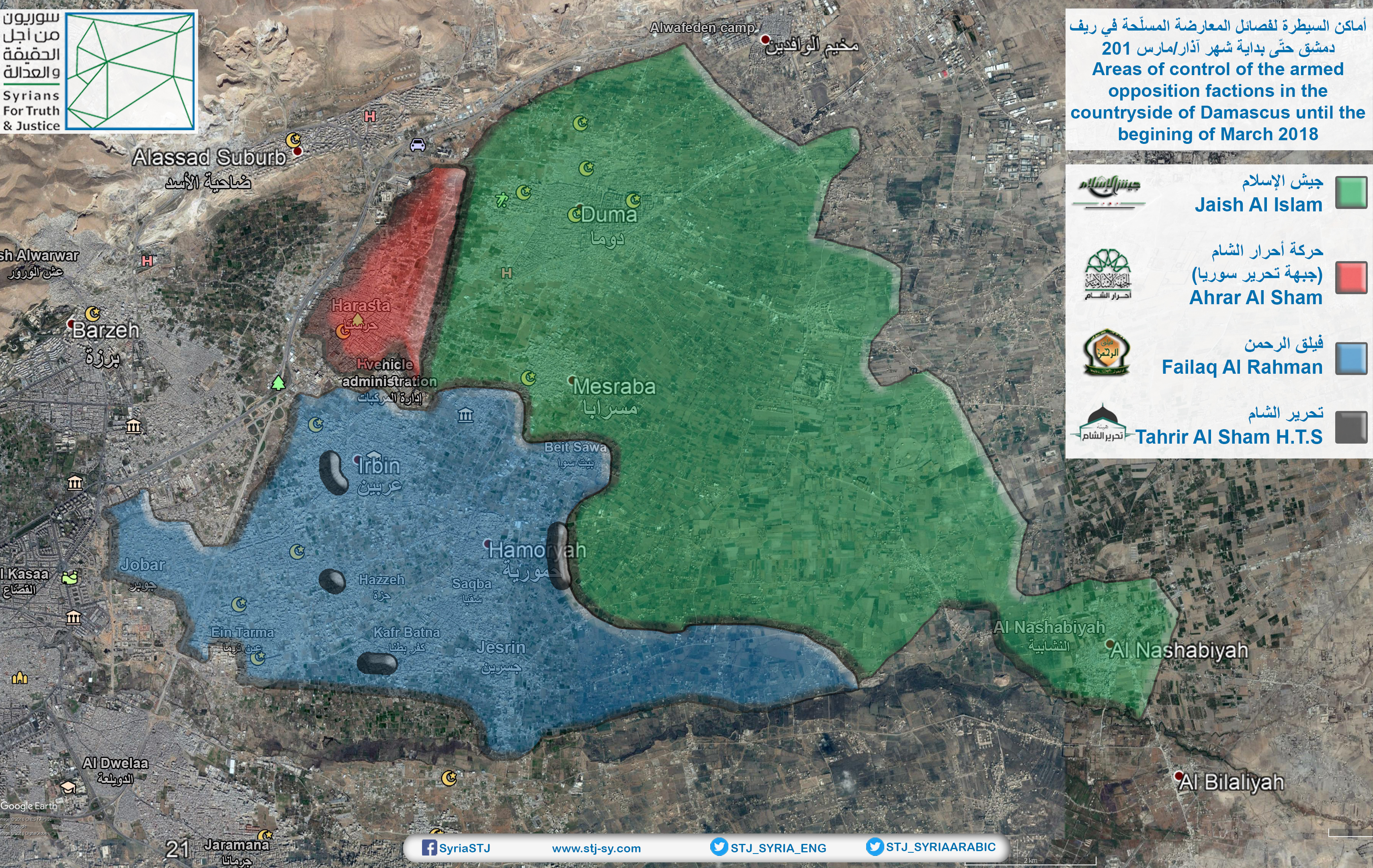
A Map illustrates the distribution of Eastern Ghouta areas among opposition factions, until 1st of March 2018.
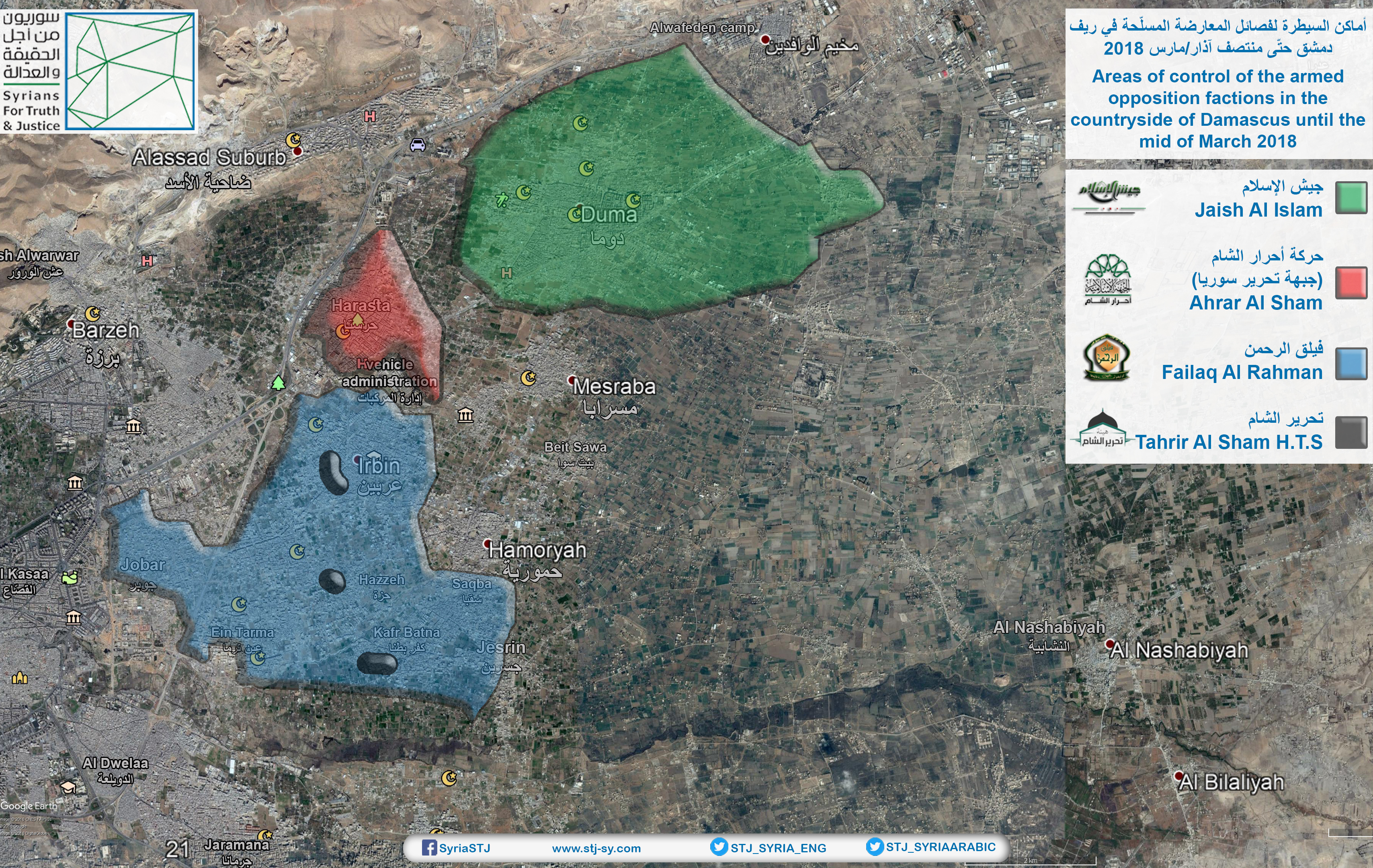
A Map illustrates the distribution of Eastern Ghouta areas among opposition factions, until March 15, 2018.
First: Targeting Hamoryah City with Rockets Loaded with Incendiary Substances:
The city of Hamoryah, under the control of The al-Rahman Legion, had a large share of the shelling and massacres committed with various types of weapons, the most recent occurred on the evening of Wednesday, March 7, 2018, where Syrian regular forces shelled residential neighborhoods in Hamoryah city with rocket launchers loaded with incendiary substances similar to phosphorous, which was done concurrently with the use of other weapons, including those loaded with napalm-like incendiary substances, and a barrel bomb loaded with toxic gas, which was dropped by a helicopter on the road between Saqba town and Hamoryah, as well as targeting the city with a missile loaded with cluster munitions the same day.
This intensive shelling left 29 civilian causalities at least, two of which were burnt to death with incendiary substances, and 50 others were suffocated by toxic gas, besides the breakout of fires in residential buildings.
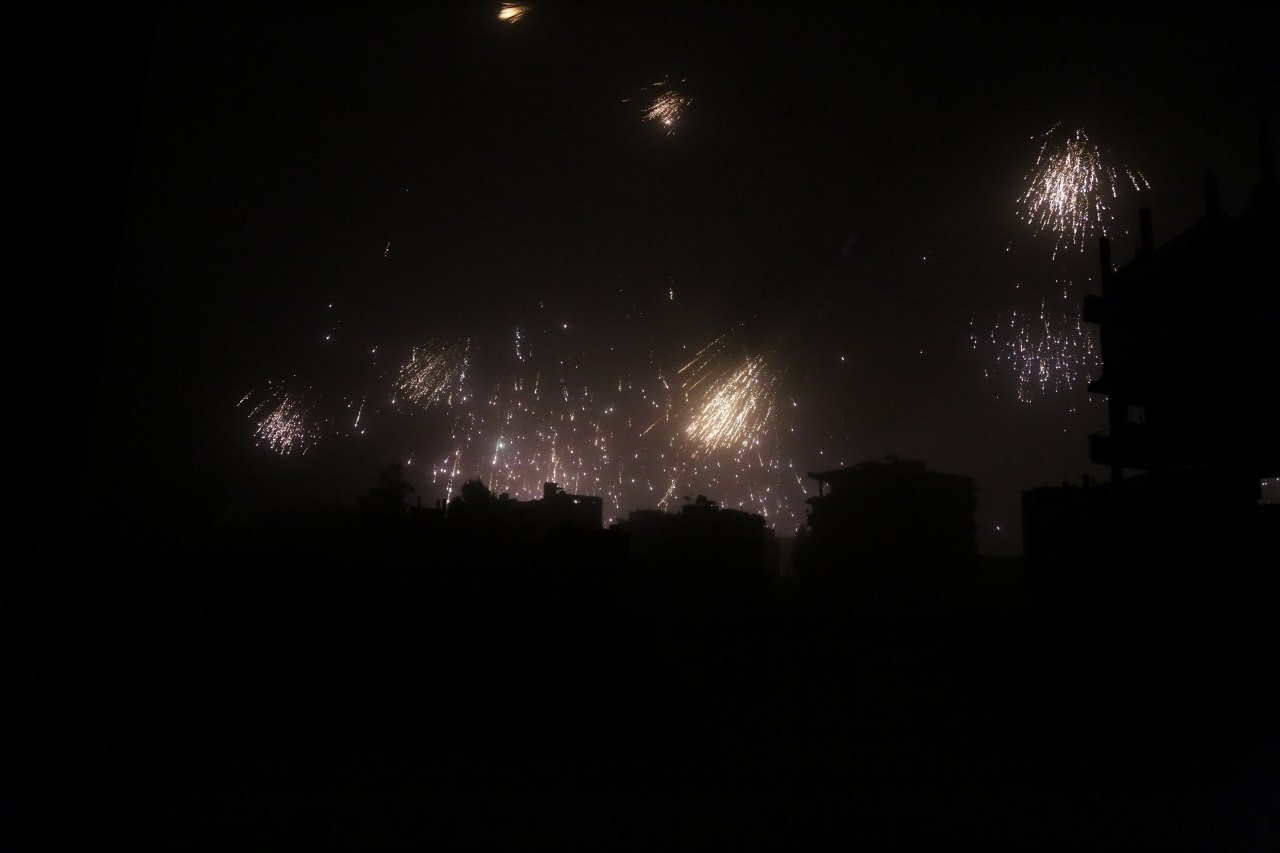
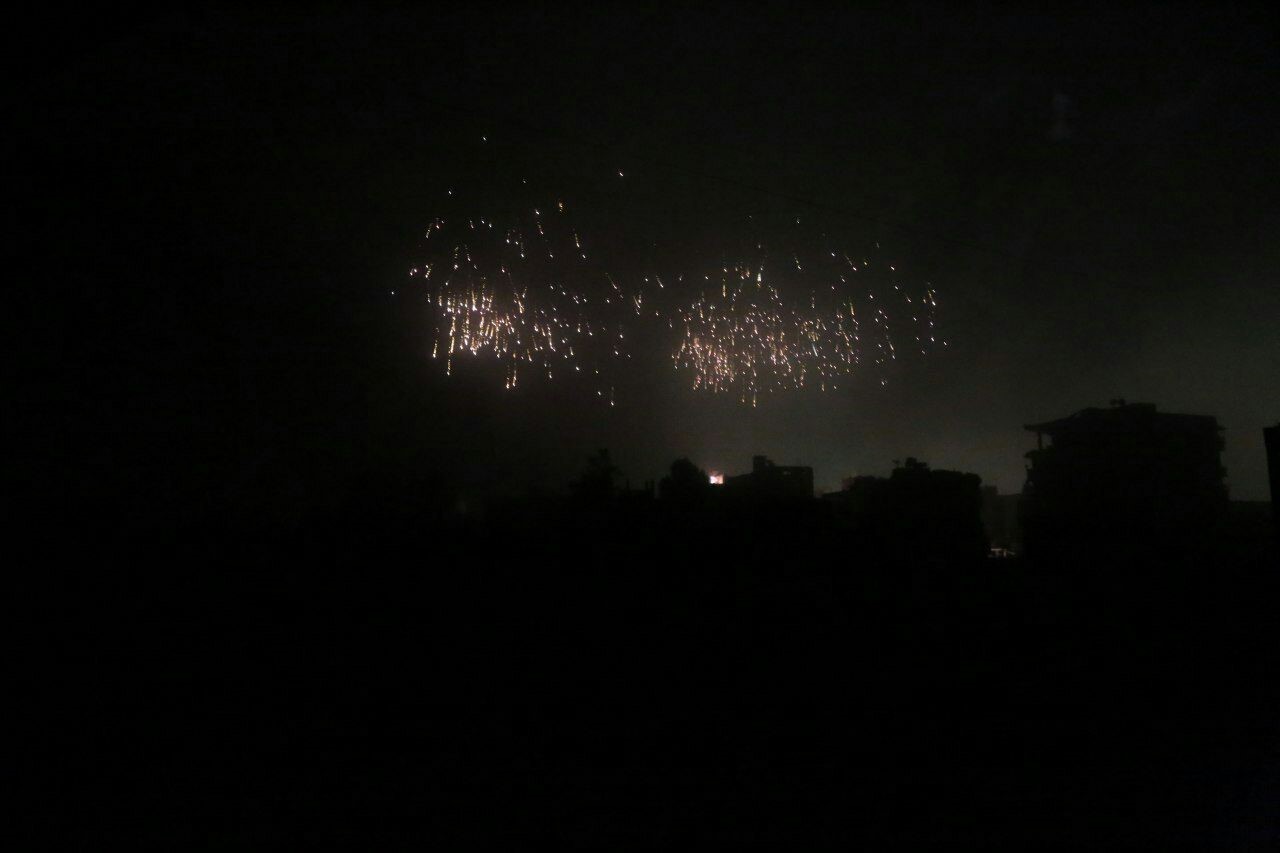
Images showing the first moments of targeting the city of Hamoryah with rocket launchers loaded with incendiary substances similar to phosphorous, on March 7, 2018
Photo credit: Syria Civil Defence in Damascus countryside (The White Helmets).
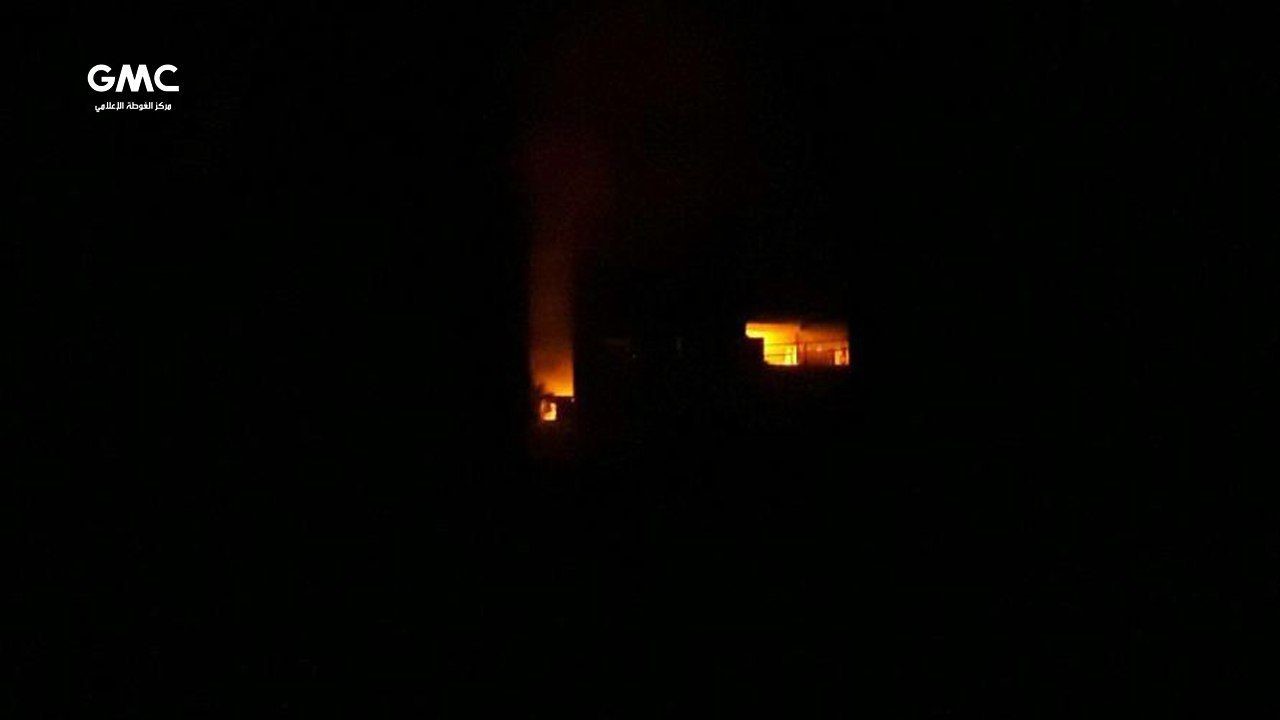
An image shows a side of fires erupted in civilian houses in Hamoryah city, being shelled with weapons loaded with incendiary substances similar to phosphorous, on March 7, 2018. Photo credit: Ghouta Media Centre.
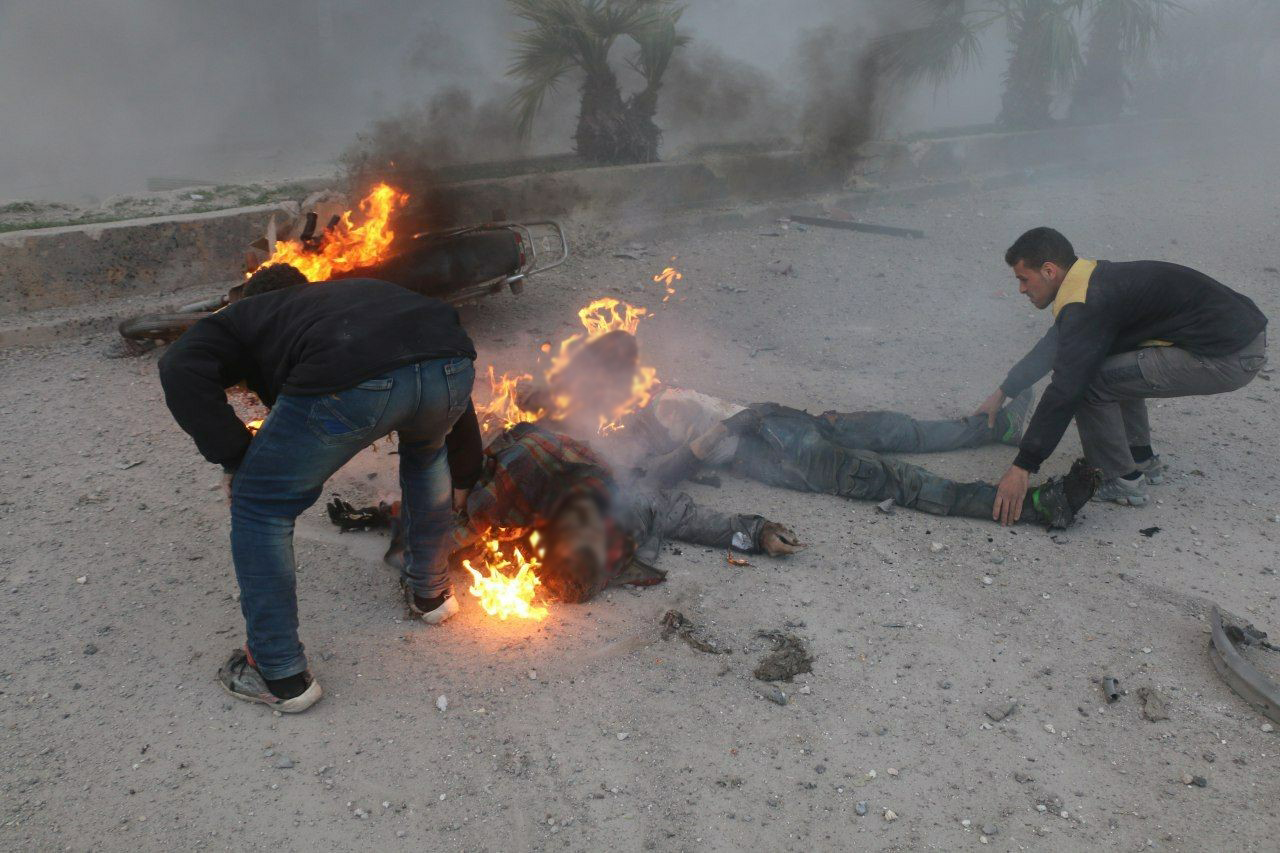
An image shows two civilians burnt to death as a result of targeting Hamoryah city with weapons loaded with incendiary substance similar to phosphorous on March 7, 2018. Photo credit: Syria Civil Defence in Damascus countryside (The White Helmets).
A civilian who attempted to flee Mesraba village towards Hamoryah on March 7, 2018, made a statement to STJ saying:
"While we were in Mesraba, a village adjacent to Hamoryah, we had been subjected to heavy shelling with various types of weapons, especially barrel bombs, as the building we were in, was targeted with an explosive container, so we flee it at once and left Mesraba on foot through farmlands towards Hamoryah city, but we couldn't keep on walking because of the intensified shelling on Hamoryah, we saw Hamoryah in the evening burning with phosphorous, so we changed our destination to Madyara village.”
Video footage aired by the Ghouta Media Centre showed the first moments of targeting Hamoryah with weapons loaded with incendiary substances, similar to phosphorous, on March 7, 2018.
Second: Targeting Irbin town with Incendiary Weapons and Toxic gas at the same time:
Just a few days after targeting Hamoryah city with incendiary weapons and toxic gas, the pro-government forces targeted residential neighborhoods in the city in two consecutive days. On Saturday, March 10, 2018, the Syrian regime escalated its campaign on the city by targeting it with 13 air raids, two of which were with weapons loaded with napalm-like incendiary substance, and shells loaded with incendiary substances similar to phosphorous, as well as dozens of "Grad" missiles and land-to-land rockets. The toll of the shelling on that day was 9 civilians deaths and a number of injures, as well as the breakout of fires in a number of residential buildings.
The following day, specifically on March 11, 2018, the Syrian regular forces resumed shelling the city with more than 40 air raids, one of which was with two rockets loaded with napalm-like incendiary substances, concurrently with another raid with rockets loaded with incendiary substances similar to phosphorous, and a third one with rockets loaded with toxic gas. According to a medical source, no injuries resulted from the attack, but STJ field researcher reported some causalities including a girl and a woman who burnt to death and a number of injures.
Abu Hani, an activist from Irbin town, talked to STJ about what happened saying:
“On that day, government forces targeted the town of Irbin with more than 40 air raids, one of which was with two napalm-laden rockets which targeted the residential neighborhood where I was. This was coincided with shelling two other residential neighborhoods; the first was targeted with phosphorus and the other, which is located in the center of the town, was targeted with toxic chlorine gas. This targeting came after a bloody day, which was on Saturday March 10, 2018, when the Syrian regime used phosphorous and the toxic chlorine also in the evening, but no casualties resulted from these attacks, as all the victims who fell that day were killed by the aerial bombardment with thermobaric weapons.”
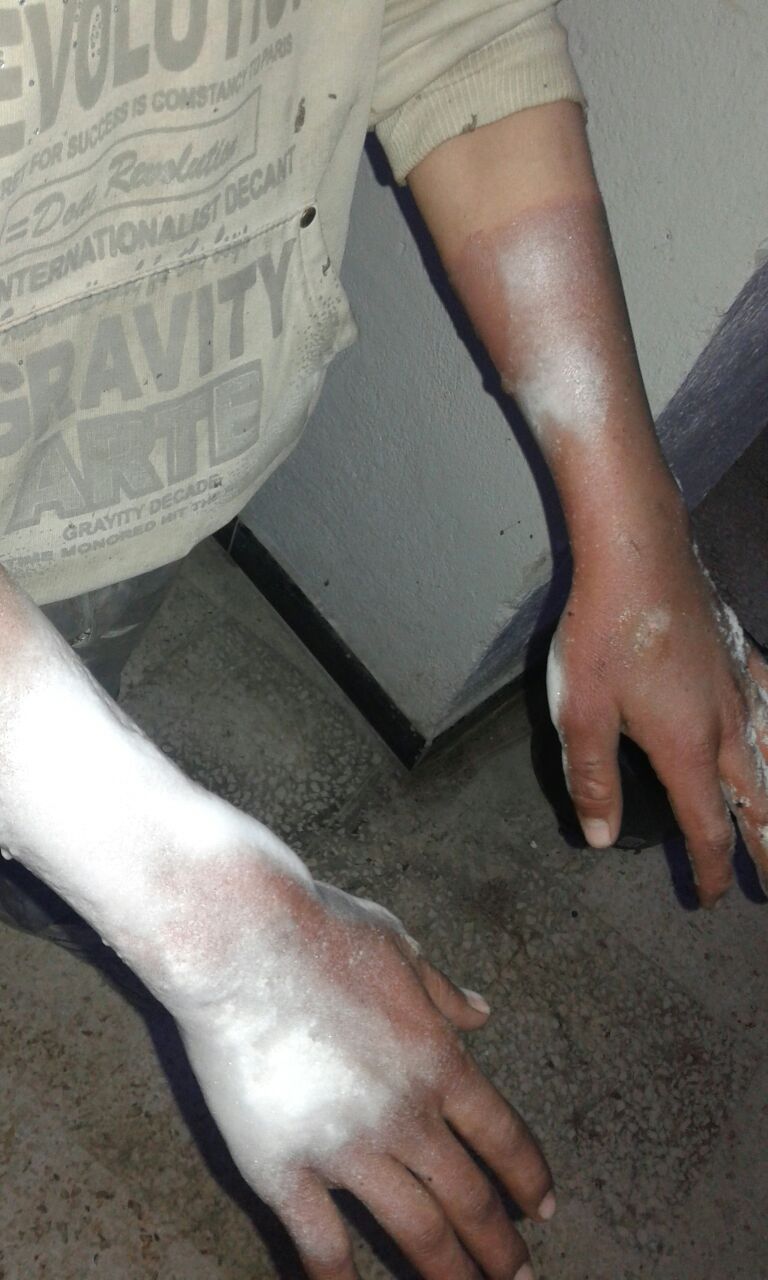
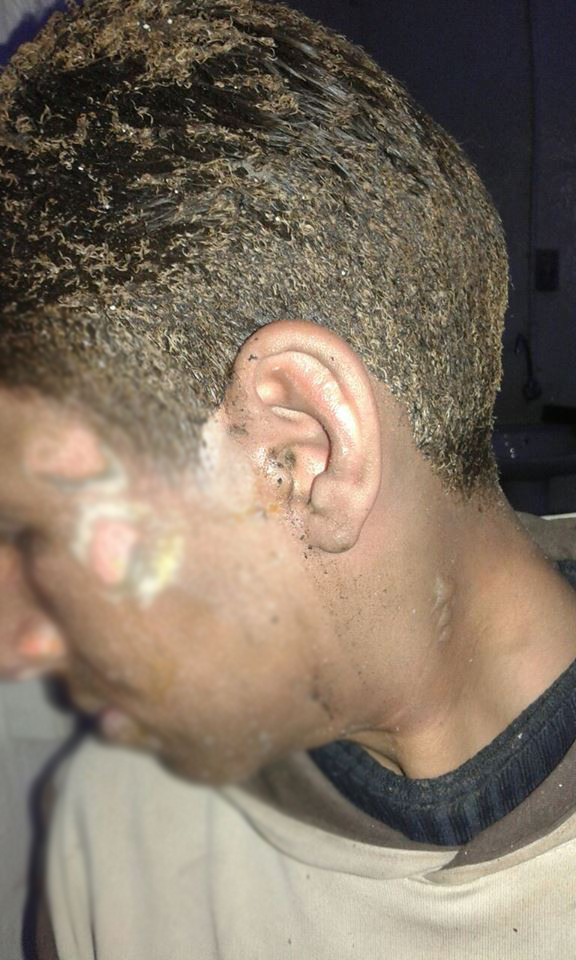
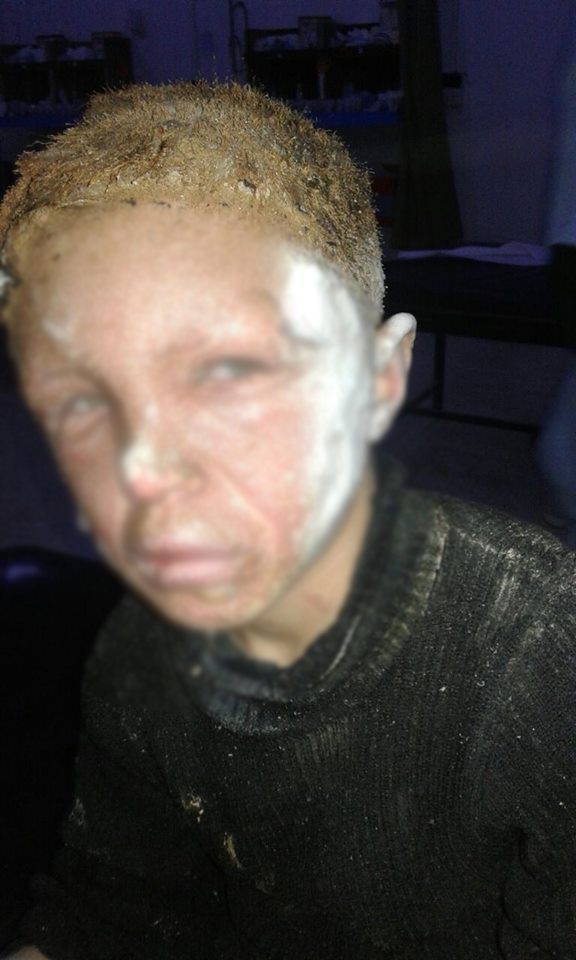
Image showing a civilian injured with burns as a result of shelling Irbin with weapons loaded with napalm-like incendiary substances on March 11, 2018.
Photo credit: STJ
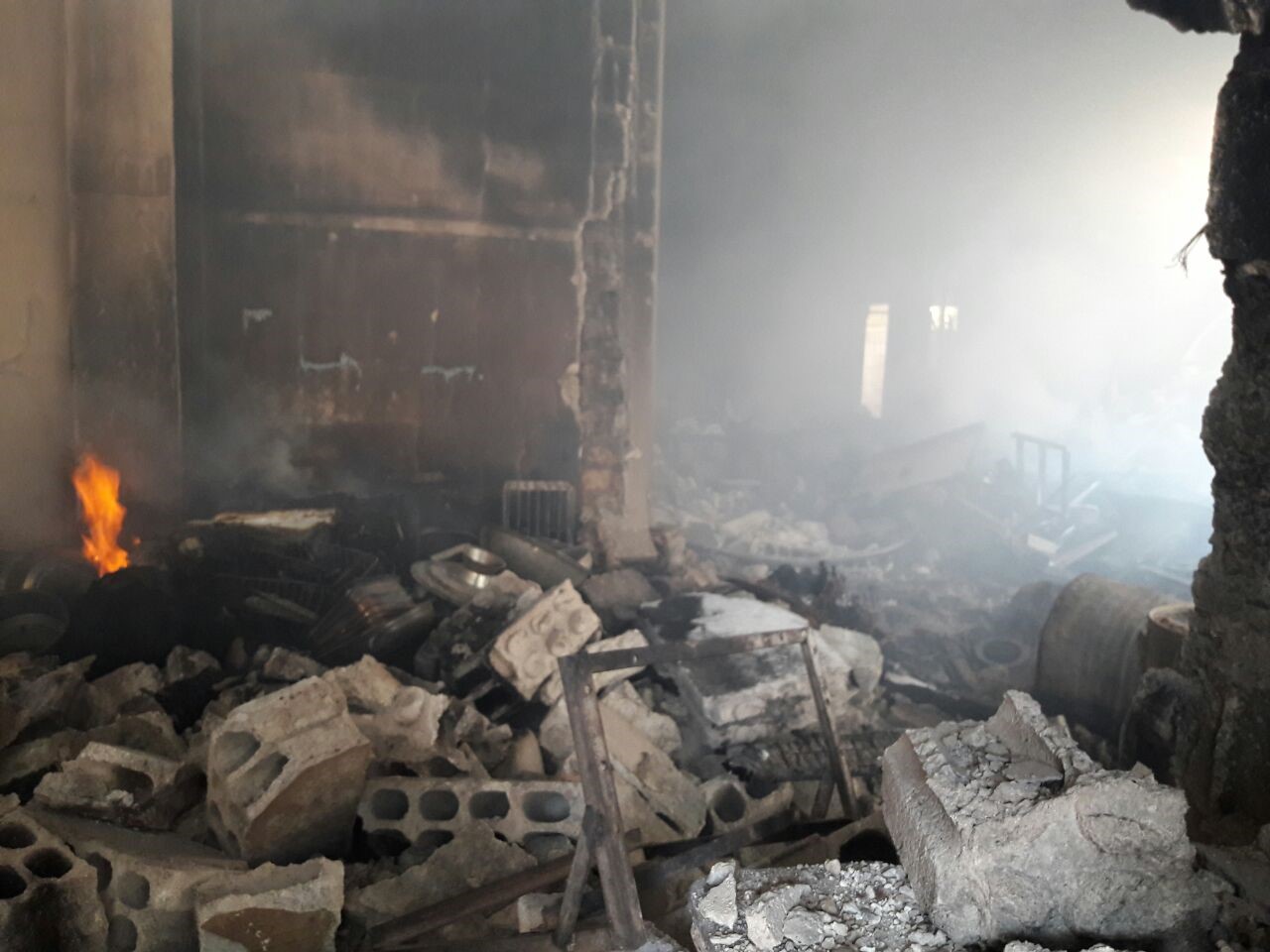
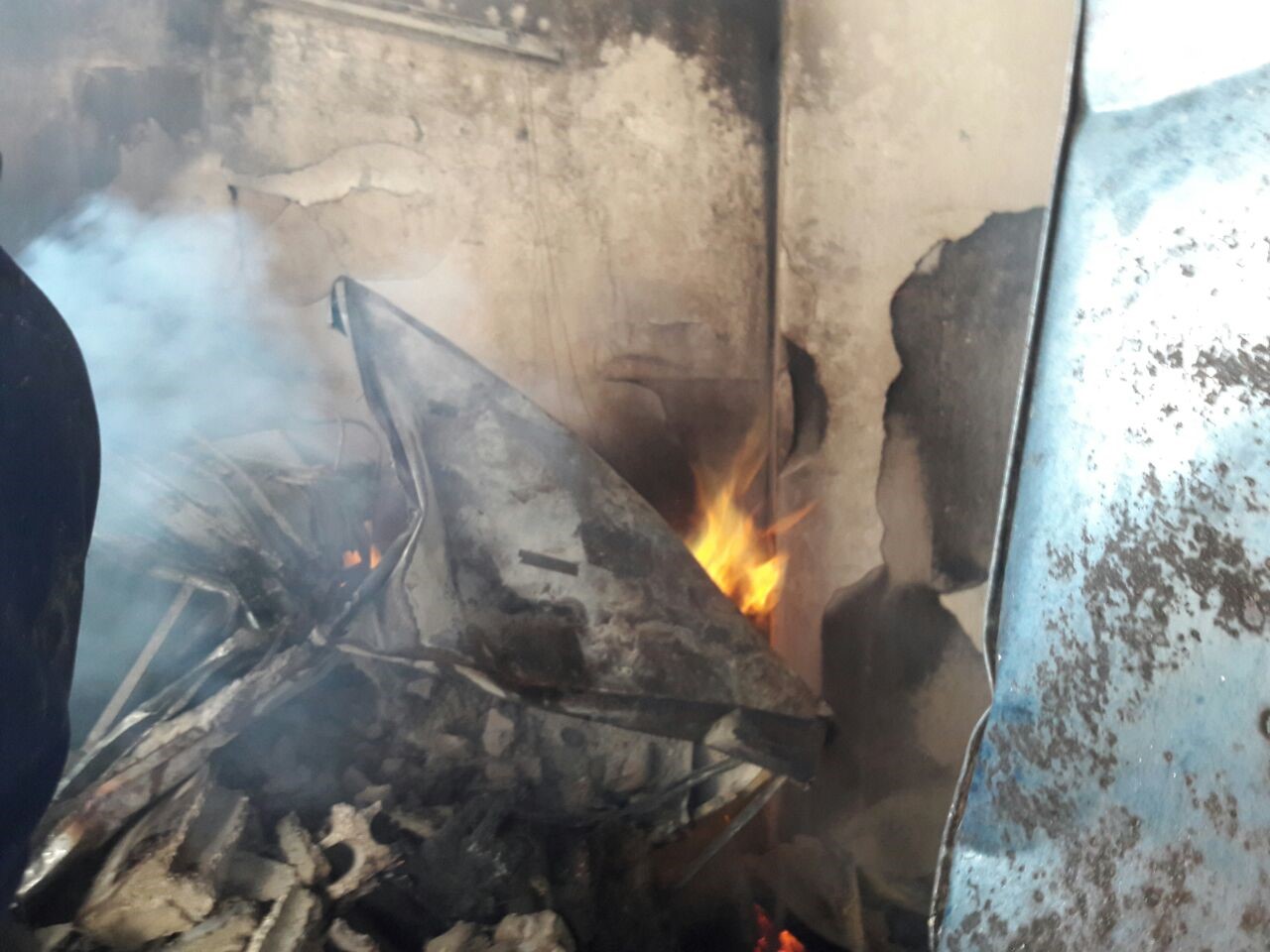
Images showing a side a civilian’s burned house following shelling Irbin with weapons loaded with napalm-like incendiary substances, on March 11, 2018.
Photo credit: Activist Zakwan Kahala.
[1] On February 17, 2018, pro-government forces and militias mobilized a very large number of vehicles and soldiers on several adjacent points for Eastern Ghouta, according to military sources, these crowds were as a part of preparations for the military operations in which “Tiger Forces”, affiliated to "Suheil al-Hassan” nicknamed The Tiger, al-Nimr, are involved, to control the Eastern Ghouta region. This campaign has begun with intense bombardment, by warplanes, helicopters and heavy artillery, leaving hundreds of civilian deaths, from the day it begins to the date of preparation of this report according to the field researcher of STJ.
[2] Hamoryah is controlled by The al-Rahman Legion.
[3] Irbin is controlled by The al-Rahman Legion.

